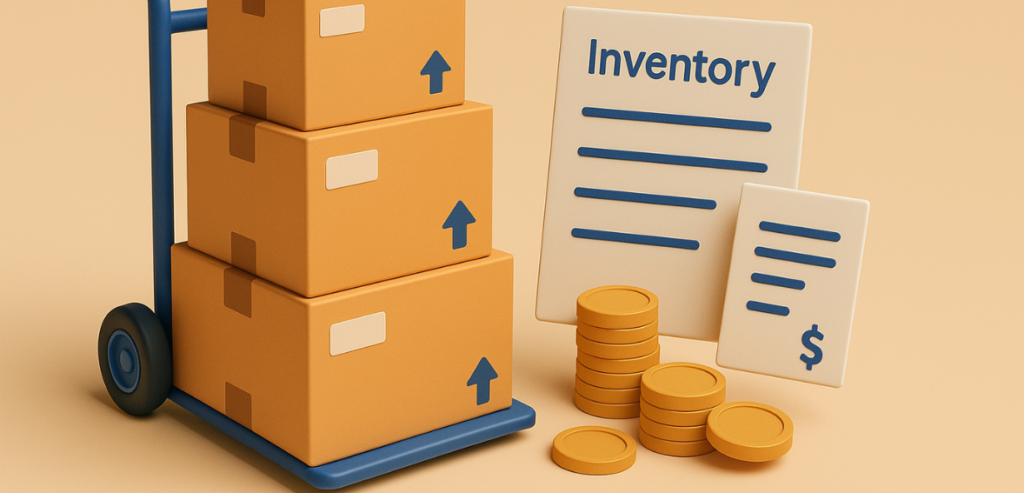
Where Your Restaurant May Be Losing Time and Money – and How to Fix It
The restaurant business is a sensitive balancing act between hospitality, operations, and finances. Passion and great food matter, but ignoring the operational problems will quietly cut into profits and wear you down. With the intense competition in today’s restaurant industry, every restaurant operations needs to audit the unnoticed leaks that cost time and money.
The Hidden Cost of Inventory Management

Food Waste: The Silent Profit Killer
Restaurant food waste often averages 4–10% of the total food purchase cost—before a single plate reaches the customer. That’s thousands of dollars lost every month. The reasons are usually systemic, not isolated mistakes. Overordering is often the main issue. Many restaurants fall into the “better too much than too little” mindset, without considering the financial impact of excess inventory. Fresh produce spoils, freezer-burned items are tossed, and money is wasted.
Poor storage practices make things worse. Ignoring FIFO (first in, first out), using incorrect temperature settings, and disorganized walk-ins all lead to early spoilage. Over-prepping is another common cause. When too much food is prepared and not sold, it usually ends up in the trash. Without accurate production tracking, the same mistakes repeat day after day.
Solution: Transforming Waste into Wealth
Using inventory management software gives immediate visibility into levels, usage patterns, and ordering requirements. Current systems can tie in with POS data to link sales to inventory usage, providing more accurate ordering projections. Having defined portion control standards ensures consistency while reducing overuse. Using standardized recipes with specific measurements and educating staff to utilize equipment such as scales and portion scoops can decrease ingredient use by 10-15% without compromising dish quality.
Innovative reuse of leftover ingredients must be an integral part of your kitchen culture. Yesterday’s roasted vegetables are today’s soup, yesterday’s bread is made into croutons, and vegetable scraps have a second life in stocks and sauces. Some restaurants have done well by offering “special” menu items created to use would-be waste products. Consider putting a “waste log” in your kitchen where employees log thrown-away food, the item, the amount, why it was thrown away, and an estimate of the cost. This simple habit brings about accountability and uncovers patterns that would otherwise remain unknown. Many restaurants find that by simply quantifying waste, there is a 20-30% decrease as employees become more aware of their behaviour.
Labour Inefficiencies: When Restaurant Operations’ Most Valuable Asset Turns Into a Debt

Labour normally accounts for 30-35% of the cost of running a restaurant and, therefore, constitutes the greatest single expense item in most restaurants. Inadequate utilization of this resource will directly affect the quality of service as well as profitability.
Scheduling Challenges and Solutions
Overstaffing bleeds profits as efficiently as food losses. Every excess employee hour translates to pure expense with no equivalent revenue generation. On the other hand, understaffing creates bottlenecks in service, lowers customer satisfaction, and commonly results in missed sales opportunities. Data-driven scheduling is an improvement. Historical sales trends can be used by restaurants to predict busy and slow times more accurately. Contemporary scheduling software can use weather forecasts, local events, and even social media sentiment to make predictions even more accurate.
Cross-training employees between various positions brings in flexibility that gains dividends during surprise rushes or no-shows. A server who can relieve running dishes or a bartender who can expedite during a crowd gives operational flexibility without adding heads. Implementing a split-shift model during peak transition periods can preserve service while lowering labour costs. It is especially useful for restaurants that see separate lunch and dinner rushes with a known break in between.
Streamlining Operational Workflows
Time studies show that restaurant employees tend to spend significant amounts of time on non-value-adding activities. Servers covering unnecessary distances because of poorly laid out stations, bartenders looking for misplaced equipment, and kitchen staff waiting for instructions all constitute opportunity costs. Process mapping each critical workflow—from order taking to food delivery, opening procedures to closing checklists—tends to uncover redundancies and inefficiencies that can be cut. This exercise tends to produce 15-20% time savings when executed carefully.
Strategic station design reduces movement and increases productivity. Having high-use items in easy reach, designing prep areas to fit menu workflow, and locating POS terminals to minimize server travel time all serve to increase efficiency. Pre-shift meetings, when well managed, get the team on the same page and avoid service disruptions. These short meetings should convey key information such as menu changes, VIP reservations, and service emphasis areas. Although some operators consider them time-consuming, well-organized pre-shift meetings usually avoid more severe time losses during service.
Technology Gaps: The Cost of Falling Behind

Most restaurants have outmoded or subpar technology infrastructure, which is causing friction points in the guest and staff experience. These technology gaps tend to remain because operators are more concerned with the initial expense than with the ongoing loss of efficiency.
POS System Optimization
Legacy POS systems are often not designed to integrate with newer technologies such as online ordering platforms, delivery services, and inventory management software. This leads to manual reconciliation tasks and increased potential for errors. Moving to a cloud-based POS system solves many of these problems while offering real-time access to essential data. Newer systems provide built-in payment processing (lowering transaction fees), digital ordering capabilities, and robust reporting for better decision-making.
Table management capabilities in enhanced POS systems decrease table turn times by 15-20 minutes on average. Through monitoring of table status and arrangement optimization, restaurants can host more customers at peak times without compromising service. Mobile payment choice is increasingly having an impact on dining choices, especially among the younger generation. Restaurants that make payment processing at the table offer typically decrease between-check presentation time and payment time by 5-7 minutes, enhancing table turns and customer satisfaction.
Embracing Automation for Routine Tasks
Reservation management systems have come a long way from simple booking software. Modern platforms can capture guest tastes, monitor dining history, and send targeted communications—all while streamlining the labour required for phone reservations. Smartphone-camera-based inventory-count apps can shave 40-60% of physical counting time off. These applications can read products, monitor counts, and populate inventory systems automatically, transforming a feared weekly chore into a daily routine.
Computerized ordering systems that produce purchase orders based on planned par levels, current stock, and forecasted usage remove the guesswork from ordering and minimize both shortage and excess inventory conditions. Kitchen display systems (KDS) that supersede printed tickets enhance front-and-back-of-house coordination and deliver useful information regarding preparation time. These systems can recognize production bottlenecks, reveal training opportunities, and ultimately drive kitchen throughput.
Menu Engineering: The Strategic Profit Lever

Your menu is more than just a list of products—it’s your main sales device and source of profit. Yet, most restaurants plan menus from habit or chef bias instead of strategic profitability consideration.
Menu Analysis Framework
The menu matrix system organizes products into four sections by measuring their customer demand and financial gain.
- Stars: High popularity and high profit
- Puzzles: Low popularity but high profit
- Workhorses: High popularity but lower profit
- Dogs: Low popularity and low profit
The method produces unexpected outcomes by revealing signature dishes that lose money during sales with profit leaders positioned in unattractive sections and unfair pricing strategies for quality products.
All menu items need formal performance assessments at a minimum of four times per year through contribution margin calculations for identifying potential products that require recipe changes, price adjustments or removal. Restaurants typically find that discarding their financially weak menu items, along with reorganizing their products, enables a 3-5% profit increase without compromising customer contentment.
Strategic Menu Design
Visual hierarchy strategies move attention toward profitable items. Eye-tracking research indicates that customers naturally follow a consistent pattern of reading menus, with specific “hot spots” getting more focus. Putting your stars and puzzles in these spots will boost their selection rate by 15-30%. Price psychology has a significant influence on buying choices. Eliminating dollar signs, employing nested pricing for upscale choices, and strategic price anchoring can guide guests toward higher-margin choices without repelling value-oriented customers.
Menu descriptions have a strong influence on perceived value and ordering behavior. Descriptive, sensory language that emphasizes preparation techniques, ingredient origins, or flavor profiles can boost sales of an item by as much as 27% based on research. Seasonal menu cycles offer several advantages over customer interest. They enable buying ingredients at peak availability (cost savings), create marketing opportunities, and facilitate the strategic testing of new products without long-term menu commitments.
Energy Consumption: The Overlooked Expense

Utility expenditures usually account for 3-5% of the operating budget of a restaurant, but they receive wildly disproportionate amounts of management neglect. As a result, most operations squander thousands of dollars each year on excess energy use.
Kitchen Equipment Efficiency
Some of the most energy-draw equipment in any business environment can be found in commercial kitchens. Older refrigeration equipment can draw 35-50% more electricity than new, energy-saving models. The cost of upgraded equipment usually pays for itself in 1-3 years on lower utility bills. The maintenance schedule on equipment is often skipped until there is a breakdown. Daily cleaning of refrigeration coils, oven and cooktop calibration, and gasket and seal inspection can lower energy use by 10-15% and increase equipment life.
Everyday practices such as preheating only where required, applying equipment of the right size for varying meal sizes, and laying out precise procedures for switching equipment on and off can achieve instant energy savings. Energy monitoring systems offer minute-by-minute visibility into usage patterns. They can help detect precise equipment or behaviours causing unnecessary usage and quantify the effect of efficiency programs, usually uncovering low-hanging 15-20% opportunities.
Facility Considerations
HVACs are one of the primary consumers of energy within the restaurant business. Programmable thermostats with temperature adjustment at off times, routine filter changes, and utilizing ceiling fans appropriately can effectively slash heating and cooling expenses. The installation of more energy-efficient lighting represents one of the quickest returns on investments in energy preservation. Installing LEDs in place of conventional incandescent and fluorescent lighting can minimize lighting energy by 60-80% on average with increased quality light provided.
Water conservation initiatives cover both environmental and cost-efficient goals. Low-flow pre-rinse spray valves for sinks, faucet aerators, and dishwashers with low water utilization will save an average of 30-40% of water usage at relatively low up-front costs. Insulation improvements through weatherstripping, window film, and additional insulation seem like a landlord’s job, but even tenant-friendly improvements can easily save energy costs significantly, especially in older buildings with low thermal performance.
Customer Acquisition and Retention: Maximizing Marketing ROI

Ineffective marketing budgets that fail to deliver acceptable returns are one of the largest and most challenging areas of potential restaurant waste. Following the top marketing strategies is the way forward:
Digital Marketing Efficiency
Aimless social media marketing gobbles up huge amounts of time with doubtful returns. Rather than attempting to have a presence everywhere, successful restaurants discover where their key public is most present and focus effort there, posting platform-tailored material that inspires participation and conversion. Site optimization will commonly disclose sizeable opportunities. Too many restaurant websites fail at their topmost functions: expressing necessary data (hours, place, menu) and aiding in actions (booking, ordering). Ongoing measurement of user behaviour through tools such as Google Analytics can detect and remove friction points from the online customer journey.
Email marketing is still one of the highest ROI channels when done right. Segmented emails based on visit frequency, ordering habits, or anniversary dates will elicit 5-10x the engagement of mass, non-personal emails, turning more one-time visitors into regulars. Local SEO optimization makes sure your restaurant shows high in geographic-based searches—important since 30-40% of restaurant searches include local intent. Claiming and maintaining listings for businesses, nurturing authentic reviews, and developing location-based content dramatically enhance online visibility at little cost.
Loyalty Program Effectiveness
Older punch-card loyalty programs are often less effective because they reward frequency rather than recency or spending levels. Modern digital loyalty systems can identify your highest-value customers—not just the most frequent ones—and reward them in a more strategic way. Tiered programs add aspirational goals that encourage higher spending. By setting clear benefit thresholds tied to increased visits or spending, restaurants can motivate guests to concentrate their dining budget at one place instead of spreading it across multiple options.
Loyalty program data also provides useful insights into customer behavior. Tracking ordering habits, visit frequency, and changing preferences makes it easier to create targeted marketing that feels more relevant to each guest. Adding referral rewards turns satisfied customers into advocates. When well-designed, loyalty programs can reduce customer acquisition costs by 20–40% compared to traditional advertising—and often bring in higher-value customers.
Conclusion
The operational inefficiencies discussed in this article may seem minor on their own—a few dollars lost to waste, some excess labor hours, or suboptimal energy use. But together, they create a significant drag on both profitability and growth. The good news is that solving these issues doesn’t usually require major investments or drastic changes. A focused effort to identify, measure, and systematically reduce inefficiencies can lead to lasting performance improvements.
Start with an honest assessment of your current operations, paying close attention to the problem areas covered earlier. Prioritize improvements based on potential impact and ease of implementation. Begin with the easier fixes that can deliver quick wins and build momentum.
Operational improvement isn’t a one-time effort—it’s an ongoing process. The most successful restaurants treat it as part of their culture. They regularly review how things are done, test new approaches, and fine-tune systems to stay ahead of both waste and competition.
By addressing common sources of inefficiency, your restaurant can not only stay afloat in a competitive market—it can grow stronger. Time and money once lost can be redirected toward better guest experiences, improved staff morale, and more consistent profitability.